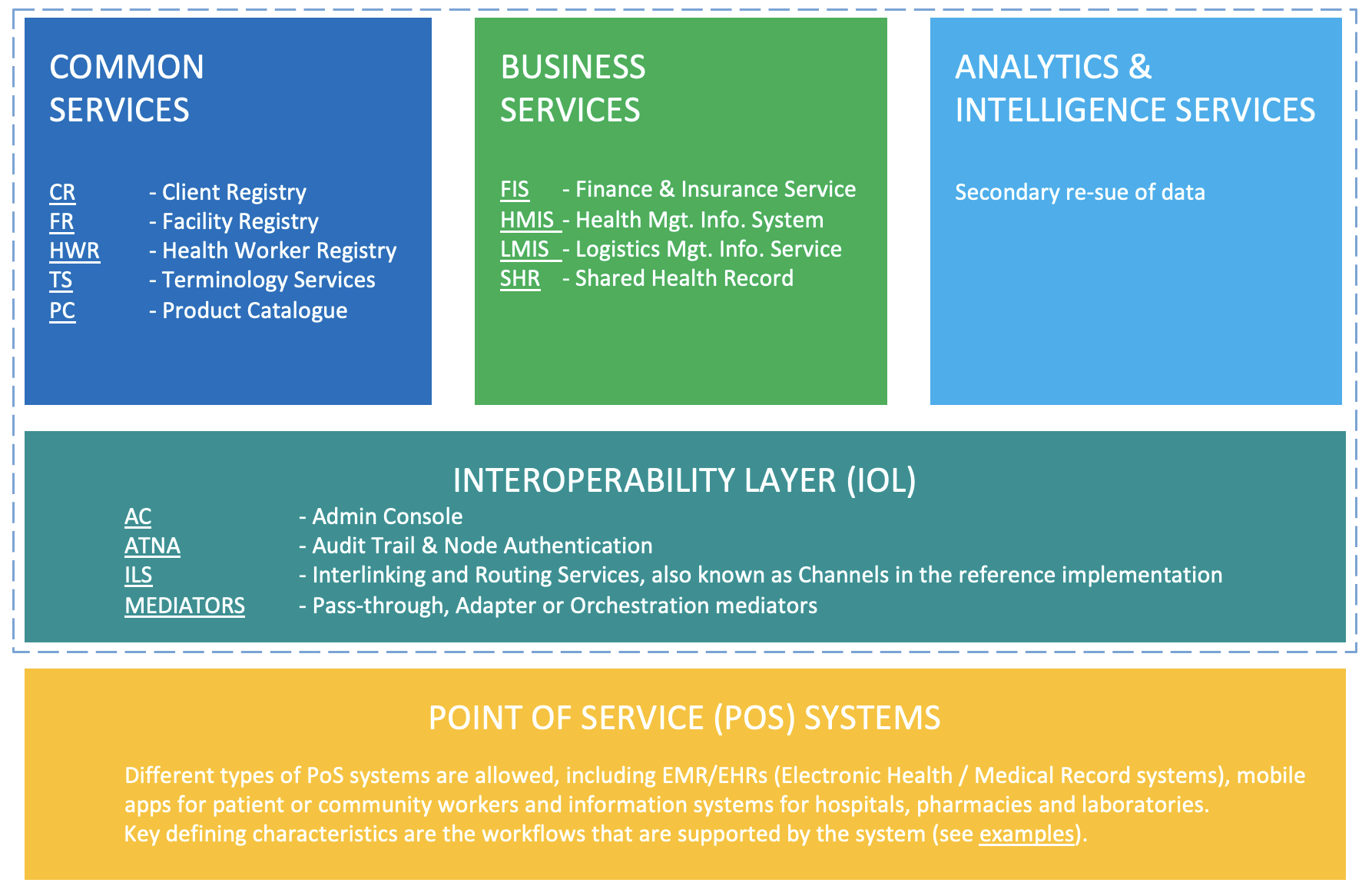Open Health Information Exchange
Why did we choose OpenHIE
The MomCare Connected Care Stack takes the openHIE framework1 as a starting point, being the most generic and commonly used health information interoperability framework. This framework has by and large been adopted by sub-Saharan African countries2, including Nigeria3, Kenya4 and Tanzania.5

The framework and its components are shown in the figure above. The bottom layer (yellow) comprises the point of service (PoS) systems, which includes the systems used by clinicians, health professionals, community health workers and the like. Examples of such systems are OpenMRS electronic medical records (EMR) system and the RapidSMS mHealth application, which are used to access and update a patient’s records, register activities and record healthcare transactions.
The second, middle layer (teal) constitutes the interoperability layer (IOL), which acts as a gateway for exchanging information between systems. Any type of information exchange, be it between two PoS systems, or between a PoS system and business services (explained below), is mediated through this interoperability layer. The interoperability layer provides functionality such as routing, translation services, auditing and authentication.
The top layer of framework comprises three distinct domains. Common Services (blue) include a variety of registry services that are designed to uniquely identify and track unique patients, facilities, healthcare products, and terminology that are used throughout the health data commons. Business Service (green) are designed to support the delivery of care within the health system. The District Health Information System version 2, for example, is a well-known and widely used Health Management Information System for collecting, analyzing, visualizing and sharing data through combining data from multiple PoS systems for a given geography or jurisdiction.6
The HDC framework explicitly adds a third domain in the top layer, which is not included in the OpenHIE specification, namely Analytics & Intelligence Services (light blue). The rationale for this addition is to facilitate secondary use of health data for academic research, real-world evidence studies etc. within the nascent concept of health data spaces.7 Note that the Kenyan Health Information Systems Interoperability Framework (KHISIF) has also explicitly included the analytics domain.
💬 TLDR: We adopted the OpenHIE (Open Health Information Exchange) framework because it provides a well-defined, community-driven framework specifically designed for interoperable health systems in LMICs. It aligns with national digital strategies and promotes a sustainable model of digitally connected care that can be replicated across countries and programs. OpenHIE helps MomCare move from standalone digital solutions to a scalable, interoperable platform for maternal healthcare.